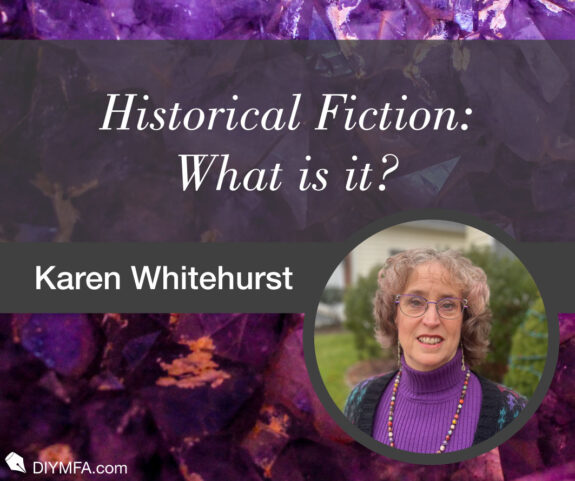When I told a writing instructor I wrote historical fiction, she replied, “Don’t put too much history in it.”
I blinked. Say what?
How can we have a clue about where we’re going if we don’t know where we’ve been?
Historical fiction can take us to the foreign country that is the past, can make us see it, experience it, care about it because we see it through the eyes of characters who live in their present, our past. It humanizes and makes understandable what looks mysterious and inhuman and avoids the distance of academic history.
Historical fiction is any piece of fiction that takes place in the past. This definition leaves out so much and leads to hanging a contemporary story on a historical backdrop. That’s Hollywood.
When is the past?
For both history and historical fiction, the past begins fifty years ago and marches back to the age of the Rig Veda, farther back if you want to get into archaeology and paleoanthropology like Jean M. Auel did.
You must have sources. You must do research.
Both are key to making the setting, the time and place wherein the characters live, breathe, act, procreate, and die. Setting is the most important choice a writer makes because setting drives every other choice. The story, like the Devil, is in the historical details—meaning my writing instructor missed the trireme, the cog, the galleon, the tea clipper, and the steamboat.
Writers of historical fiction engage in world building. We recreate, as much as possible, the ethos and culture of a past era. Eighteenth century England is not late eleventh century Song Dynasty China, but both are real, plausible settings for historical fiction. We can set our stories in London or Birmingham, which are actual places, or in a fictional small village in the northern part of Song, China, about to be overrun by the Jurchen people. Either way, the story has to make sense in the context of the setting.
The plot can be completely fictitious or it can hang on actual events.
Usually, it’s a mixture of fact and fiction. All of the people, events (political, cultural, religious), and even disasters have to arise from the context of the period. My murder mystery takes place during the Gordon Riots, which happened over the course of a week in London, in June 1780. The murders, which the Riots don’t hide, are fictitious. The subsequent solving of the case keeps within the medical and legal knowledge of the time.
Whether they are fully fictional, based upon real persons, or actual historical people, the characters have to think, feel, and act as people really would in the period.
They can have a range of behavior and beliefs—staid, proud, people-pleasing, Catholic, atheist, feminist—but it all has to be period-specific. It should also consider class (better-termed rank before Karl Marx) and gender within the context of the chosen time period.
No matter the era, everybody operates within a constructed social framework. If the characters step outside what’s acceptable, there will be consequences, some of which can be quite severe. Conflicts between and among characters, or with society itself, drive the plot; therefore, they should be the kind that people of the time would’ve faced.
Theme, universal concepts such as revenge, love, death, piety, will be revealed through the characters and the conflicts, but will be true to the setting.
Language is the toughest question in historical fiction because it goes to voice, both of the narrator and of individual characters, and to tone and diction.
How “period” do you go? For an eighteenth century story, do I use “natural philosophy” throughout or can I intersperse “science”, which didn’t enter English until the early nineteenth century?
Yes, the characters should all speak in language appropriate to the period, to their rank/class, and to their gender, but their language has to be natural. With actual period language, which includes the grammar, a little goes a long way. With foreign languages, a sentence or two leaves the impression of fluency. Generally, stories set in ancient times are understood to be translated. Even if you can write it, nobody wants to read a story in Latin or Sanskrit.
This caveat is even more true for slang and dialect. Both can be distracting or hard to read. If you can’t get the slang or dialect right, you’ll take readers right out of the story or, worse, offend them. “Hammered” isn’t slang for drunk in seventeenth-century England, and the Harfoots’s Irish accents in The Rings of Power offended many. The latter goes to too many (one would be too many) patronizing and/or demeaning depictions of the Irish by English-using writers.
And watch for my next blog featuring examples of the many different types of historical fiction.

A former college professor, Karen Whitehurst holds a Ph.D. in British history from the University of Virginia. She currently resides in Maryland with one long-suffering husband, three naughty cats, and over one hundred houseplants. A writer of both historical mystery and SF & F, she is currently at work on a mystery set in 18th century England during the Gordon Riots.
For more information, visit her website.







